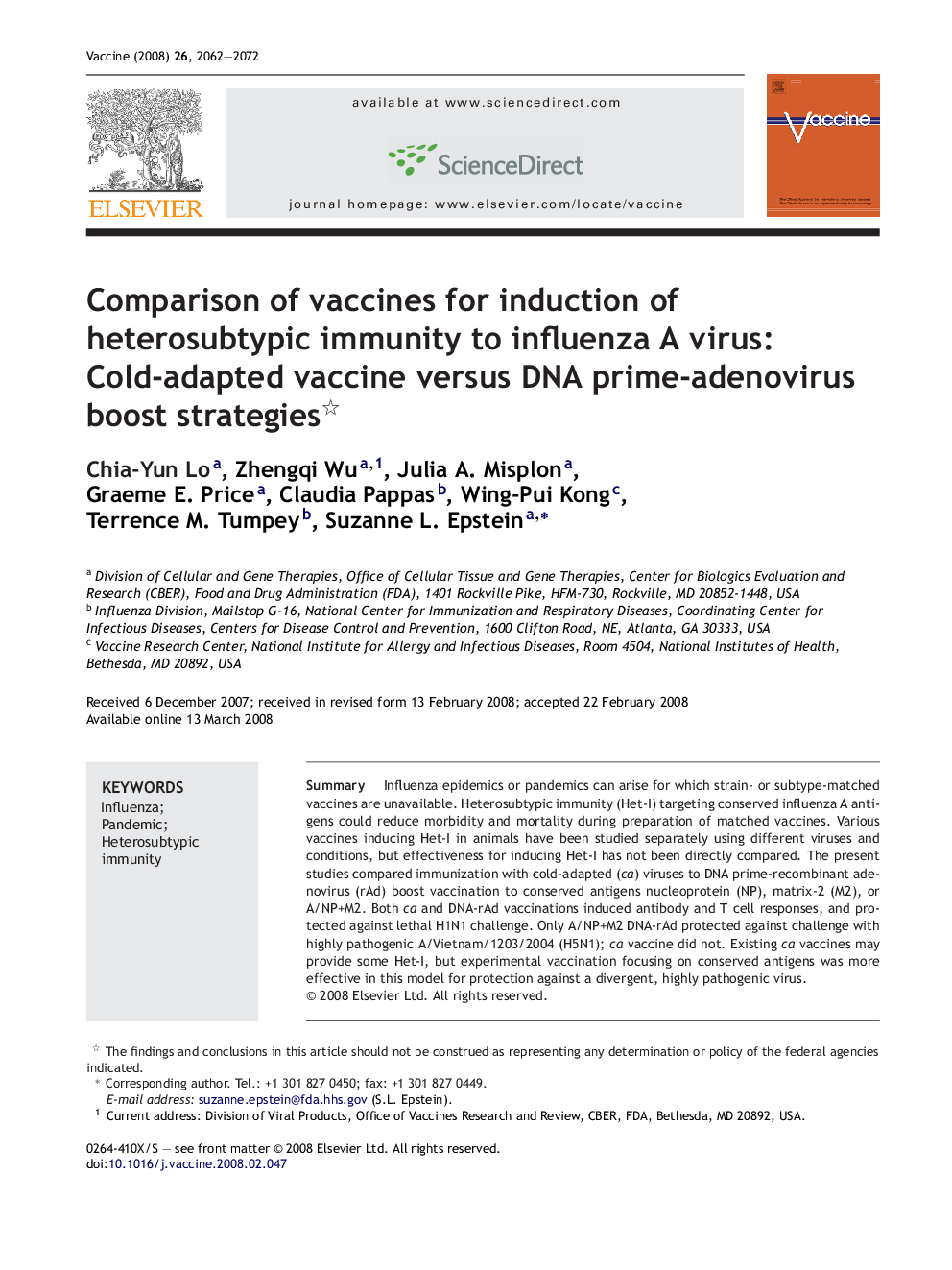| کد مقاله | کد نشریه | سال انتشار | مقاله انگلیسی | نسخه تمام متن |
|---|---|---|---|---|
| 2406617 | 1103088 | 2008 | 11 صفحه PDF | دانلود رایگان |

SummaryInfluenza epidemics or pandemics can arise for which strain- or subtype-matched vaccines are unavailable. Heterosubtypic immunity (Het-I) targeting conserved influenza A antigens could reduce morbidity and mortality during preparation of matched vaccines. Various vaccines inducing Het-I in animals have been studied separately using different viruses and conditions, but effectiveness for inducing Het-I has not been directly compared. The present studies compared immunization with cold-adapted (ca) viruses to DNA prime-recombinant adenovirus (rAd) boost vaccination to conserved antigens nucleoprotein (NP), matrix-2 (M2), or A/NP+M2. Both ca and DNA-rAd vaccinations induced antibody and T cell responses, and protected against lethal H1N1 challenge. Only A/NP+M2 DNA-rAd protected against challenge with highly pathogenic A/Vietnam/1203/2004 (H5N1); ca vaccine did not. Existing ca vaccines may provide some Het-I, but experimental vaccination focusing on conserved antigens was more effective in this model for protection against a divergent, highly pathogenic virus.
Journal: Vaccine - Volume 26, Issue 17, 16 April 2008, Pages 2062–2072